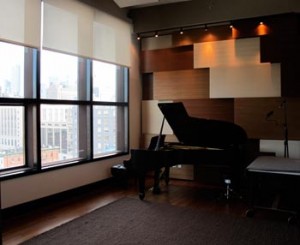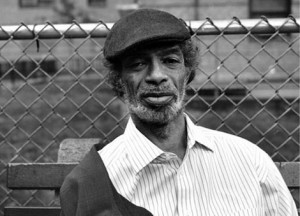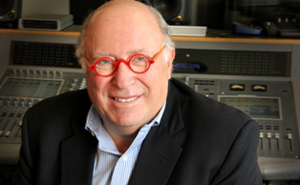The SonicScoop Year in Review: Top NYC Music Business News and Trends of 2011
THE FIVE BOROUGHS: Wire-to-wire, 2011 in New York City was a maelstrom of music production and business developments.
Like any battle worth fighting, there was a constant sense of two-steps-forward one-step-back pervading the action for most. Those who successfully navigated the music-to-picture minefield, shot straight with their startup, made a name in video games or were allied right in publishing may have had a banner year.
But just as often for NYC producers, engineers, mixers, studios, labels, and businesses of all levels, this year felt like a nonstop guessing game. Would Spotify and the Amazon Cloud help business, hurt it, or none of the above? Does a hit record matter anymore? Advance with reckless abandon – or retreat while there’s still time?
As we did in 2010, we review the year’s primary news and trends, filtered through the fog of war that was 2011.
On the recording, mixing and mastering front, studio openings far outnumbered closings, as facilities large and small showed their confidence in NYC by starting up, building out, or renovating.
Ann Mincieli elevated world-class studio expectations with the opening of Jungle City Studios on Manhattan’s West Side.
Downtown Music made a big statement with the addition of a vintage Neve 8014 console.
NYC mastering cornerstone Howie Weinberg departed Scott Hull’s Masterdisk for Los Angeles.
The door revolved back into Masterdisk, as another legend – Vlado Meller – exited the suddenly defunct Universal East (closed down on April 1st) and set up shop at the West Side complex.
Studios and the social scene intermingled in a new way at the first “Inside Sessions”, presented by Avid and SonicScoop at Stratosphere Sound.
NYC recording icons whose musical presence loomed large here and worldwide passed on. RIP Nick Ashford and Gil Scott Heron.
The upstate studio scene got yet another addition with the opening of the WSDG-designed World Harmony Studios, built into a 3-story 4500 sq. ft. redwood lodge.
The intense success of a Broadway smash still held sway, as evidenced by the groundbreaking work that went into Frank Filipetti’s recording of The Book of Mormon cast album.
Brooklyn remained fertile ground for new spaces, as the multiroom studio The End debuted in Greenpoint.
The End was one of a crop of next-gen large-format Brooklyn facilities opening or about to come fully online, including the bigger-better Studio G, a sizable new two-room home for The Bunker, Strange Weather, and The Motherbrain.
Facilities supporting classical music were full speed ahead, as plugged-in new mega-rehearsal space The Dimenna Center came online on West 37th Street.
Electric Lady upped the ante by installing a Neve 8078 (from Clinton Recording) into Studio A, while a vintage API 3288 starred in a new mix suite on the second floor.
The much buzzed-about branding exercise that was Converse Rubber Tracks arrived in Williamsburg – reports of the demise of the rest of the NYC recording industry prove greatly exaggerated.
723 7th Avenue became the loudest location in Times Square when Quad Studios launched Studio Q1, with three different analog summing mixers, a pair of custom Augspurger Dual 15” main monitors, and two subwoofers.
Small studios showed they were more than willing to reinvest in themselves, as seen at busy facilities like Galuminum Foil which dramatically upgraded their control room.
Smaller studios still rolled the dice and introduced themselves. Greenpoint’s Tiny Thunder Audio was emblematic of producers banking on the growing number of Brooklyn artists needing a professional space to track vocals, or otherwise focus on one aspect of the production chain.
Mobile audio remained a niche in motion, giving birth to spirited outfits like Equal Sonics.
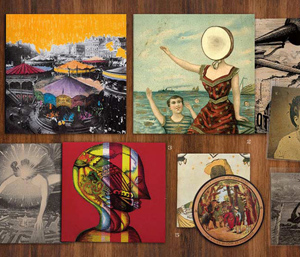
All about the music in mastering, as at The Lodge and their treatment of Neutral Milk Hotel’s boxset.
Experimentation between artist and studio ran rampant, such as with La Dispute’s “no reverb allowed” adventure at Stadium Red.
NYC mastering stretched its own technical and creative legs, with ambitious projects like the Neutral Milk Hotel box set being finished by Joe LaPorta of The Lodge.
Ears of experience convinced Anthony “Rocky” Gallo (Cutting Room Studios) to open his own production/tracking/mixing facility in Greenpoint.
Ten years to the day after starting the world-class Bennett Studios in a converted Englewood, NJ railroad station, Dae Bennett closed its doors.
As one door closed, another opened across the river in Garrison, NY, as the prolific singer/songwriter Duncan Sheik made his residential destination, Sneaky Studios, available to the outside world.
Recordists and artists alike took a momentary break from sessions to converge at AES 2011 in NYC. Although the base of operations was the Javits Center, the real heart – as usual – beat under cover of darkness at unforgettable parties ranging from Brooklyn’s raw new Studio G space to the East Village environs of Flux Studios.
And tracking/mixing sessions just flat-out abounded, with our best-of-2011 “Sezzion Buzz”, showing the world’s top artists and producers working nonstop throughout NYC and the tri-state area.
**
With Madison Avenue, film production and TV series abounding – and a NY tax incentive for them to work in state – audio post activity remained fast-paced. Even as facilities dealt with constant downward pressure on pricing, there still seemed to be plenty of players in the game.
Audio post mixers and sound designers with followings remained a hot commodity, as suite-switches flew thick and fast.
The Audio Branding Congress moved from Europe to New York City in its 3rd year, attracting some of the brightest minds in the business to the Columbia campus in November.
Gotham bid adieu to HSRNY, the city’s flagship audio post facility since 1975.
Just as quickly, composer Andrew Hollander helped launch the full-service post boutique Goodpenny.
And multiroom midtown facilities like Pomann Sound demonstrated that they had staying power.
New amalgamations of synch licensing and music composition emerged at innovative places like Brooklyn’s Melody Robot.
The studio-in-studio trend continued, as video editorial house FLUID gave birth to audio post room Mr. Bronx – headed up by former audioEngine mixer David Wolfe.
Longtime musical thought leaders like Philip Glass kept NYC in the global spotlight, powering opera from Austria to BAM via his East Village HQ.
And film scoring quietly thrived, with leaders like Carter Burwell splitting his time between TriBeCa and the Hamptons to complete the hotly anticipated score for Twilight.
**
From manufacturing to music licensing, inspiration sprang eternal for the business-minded in the five boroughs.
Hardware proved it could still be born and bred in Manhattan, as Origin Point Audio introduced itself with the Senator non-linear compressor.
Original music/music supervision specialists Search Party were of many in the field that expanded, adding reach (to Oregon) and roster (Chris Funk of the Decemberists). Labels like Decon Records sharpened their internal focus on licensing with new hires. Streamlined new music supervision ventures of every stripe continued to arrive, like Synchtank, JuxMusic, and The SongHunters.
Boutique publishers saw their chance, such as the newly-opened 401k initiative from Veronica Gretton.
Creative online businesses enabling previously untenable levels of creativity launched. Brooklyn’s LegitMix, for example, vastly streamlined the clearance process for the fast release of 100% licensed remixes.
Venture capital and funding rounds were still the name of the game for many, as seen by the $6 million cash infusion received by audio fingerprinting technology company Tunesat.
Experienced professionals recognized NYC service voids yet to be filled, founding niche-but-necessary businesses such as Dr. Julie Glick’s Musicians Hearing Solutions.
No less than Sir Elton John invested in the area, as a co-founder of Rocket Music Entertainment Group. Located within Beat360 Studios, the NYC offices join its London and Tokyo brethren in managing producers, mixers and elite songwriters.
“NYC is still the greatest city in the world. It always will be. It doesn’t matter the genre, beyond NYC and into the tri-state area, it’s still the place to be. People move here for a reason: There’s an energy about being a band in NYC that’s unmatched anywhere,” Matt Pinfield told us. This on the heels of the loss of the rock radio format at WRXP, and the triumphant return of his “120 Minutes” series for MTV.
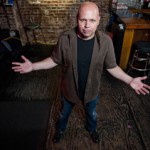
Matt Pinfield returned with “120 Minutes” on the LES, but was stymied in his crusade to advance NYC rock radio. (Photo: Mike-Stypulkoski)
Live gatherings kept on multiplying, as examined in the 2nd year of Brooklyn’s Tinderbox Music Festival.
Digital streaming/mechanical royalty players – like upstart Rightsflow and seasoned veteran Harry Fox Agency (HFA) – competed for position.
Some NYC record labels, like savvy survivalists Razor & Tie, grew by connecting solid talent with a broadening range of media possibilities.
Established digitally-based innovators like TuneCore, took advantage of M&A activity in the music publishing sector, pouncing on experienced pros to form new ventures like its Songwriter Service, providing a slate of global copyright/licensing/royalty collection services. Other startups in the sector came of age, as Downtown Music’s SongTrust celebrated its first full year in business.
Retail got the gear into the people’s hands, providing equipment of course, but also NYC-elite levels of support. Top sellers like Alto Music NYC continually kept its customers informed with live group sessions, while B&H re-examined the microphone purchase process.
Talent buying for live venues, events and festivals remained a solid pillar of the industry, as evidenced by the launch of Blue Note Entertainment Group, and the busy agent/artist rosters of longtime midtown talent agencies like The Agency Group.
NYC-based virtual instrument developers Heavyocity and SampleLogic are in it to win it, with increasingly popular music creation tools for scoring and original music production.
Leading area studio design firms saw sufficient demand to expand overseas operations. John Storyk’s WSDG implemented German and Spanish offices, and Troy Germano’s Studio Design Group teamed up with Mexico’s Jose Reyes to form RG Germano Studios Tampico.
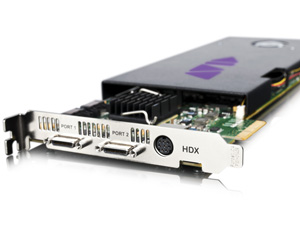
Avid made near-simultaneous announcements of a landmark product release and corporate restructuring.
The passing of Steve Jobs caused the audio industry – and many, many more – to pause and reflect.
On the night before AES, Avid announced Pro Tools 10 and the new Pro Tools HDX DAW systems, which the company called a “gigantic leap in sound and speed”.
Exactly seven days later, Avid announced its latest restructuring, eliminating 10% of its workforce.
The AES welcomed its new Executive Director, Firewire audio pioneer Bob Moses, who assumes his new role on January 1st, 2012.
Special thanks to SonicScoop’s many talented bloggers, reviewers and contributors who helped make all of the above possible in 2011. Equal thanks to all to our great visitors who are coming along for the journey. Happy New Year, from all of us at SonicScoop!
— Janice Brown & David Weiss
Please note: When you buy products through links on this page, we may earn an affiliate commission.







